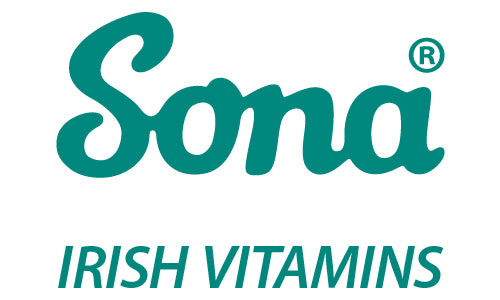
Omega-3 fatty acids play a fundamental role in growth and development in children. They are also associated with numerous health benefits including reliving respiratory issues, promoting better sleep, and enhancing brain health.
In this article you can find:
- What are omega-3 fatty acids?
- What are the benefits of omega-3 fatty acids for children?
- How much omega-3 should a child be given?
What are omega-3 fatty acids?
Omega-3 fatty acids are vital to many aspects of health, such as fetal development, brain function, and immunity. They are classified as an essential fatty acid (EFA) since they are necessary for health and cannot be made by the body.
The three most important types of omega-3 fatty acids are ALA (alpha-linolenic acid), EPA (eicosapentaenoic acid), and DHA (docosahexaenoic acid). ALA is found in plant foods such as flaxseeds, rapeseeds, soybeans, pumpkin seeds, perilla seeds, and walnuts. While EPA and DHA are found in oily fish, such as salmon, fresh tuna, mackerel, and herring.
Out of the three, ALA is the most common omega-3 fatty acid found in the diet. The body mainly utilises ALA for energy, as it needs to be converted into either EHA or DHA for anything other. Unfortunately, this conversion process is inefficient in humans, as only a small amount of ALA is converted into EPA and even less into DHA.
The body utilises EPA to produce signaling molecules called eicosanoids. Eicosanoids are involved in vasodilation (the widening of the blood vessels) and vasoconstriction (the narrowing of the blood vessels), reducing inflammation, promotion of sleep, pain, and fever.
DHA is critical for brain development and function and can even affect the speed and quality of communication between nerve cells. DHA is also essential for good eye health, may decrease risk factors for heart disease.
How are the benefits of omega-3 fatty acids for children?
Research suggests that omega-3 fatty acids have the potential to improve brain function and mood in children, primarily due to their effects on serotonin, in which omega-3 is an essential component of.
Serotonin is a neurotransmitter that has a key role in stabilizing our mood, feelings of well-being, and happiness. Serotonin also plays a key role in modulating cognition, reward, learning, and memory, as well as numerous other physiological processes.
Moreover, research has also distinguished that omega-3 fatty acids can help relieve symptoms of asthma in children, such as chest pain, breathing difficulties, coughing, and wheezing,
How much omega-3 should a child be given?
Research suggests that 120-1300mg of combined DHA and EPA per day is beneficial for children. However, it is still important to consult you doctor before starting you child on supplements if you have any concerns.
Sona ZOMEGA SMOOTHIE provides essential Omega 3 Fatty Acids EPA and DHA in a sugar free, delicious smoothie that children love with added vitamins, in a ‘Tutti Frutti’ flavour. Each 5ml serving provides 370mg of High Purity Omega 3 Fatty Acids in 1042mg of fish oil.
References
Hegarty, B., & Parker, G. (2013). Fish oil as a management component for mood disorders – an evolving signal. Current Opinion In Psychiatry, 26(1), 33-40. doi: 10.1097/yco.0b013e32835ab4a7.
Mori, T. (2014). Omega-3 fatty acids and cardiovascular disease: epidemiology and effects on cardiometabolic risk factors. Food Funct., 5(9), 2004-2019. doi: 10.1039/c4fo00393d.
Nagakura, T., Matsuda, S., Shichijyo, K., Sugimoto, H., & Hata, K. (2000). Dietary supplementation with fish oil rich in ω-3 polyunsaturated fatty acids in children with bronchial asthma. European Respiratory Journal, 16(5), 861-865. doi: 10.1183/09031936.00.16586100
Newberry, S., Chung, M., Booth, M., Maglione, M., Tang, A., & O'Hanlon, C. et al. (2016). Omega-3 Fatty Acids and Maternal and Child Health: An Updated Systematic Review. doi: 10.23970/ahrqepcerta224.
Office of Dietary Supplements - Omega-3 Fatty Acids. (2021). Retrieved 10 June 2021, from https://ods.od.nih.gov/factsheets/Omega3FattyAcids-HealthProfessional/.
Rubin, M., Kim, K., & Logan, A. (2008). Acne vulgaris, mental health and omega-3 fatty acids: a report of cases. Lipids In Health And Disease, 7(1), 36. doi: 10.1186/1476-511x-7-36.
Surette, M. (2008). The science behind dietary omega-3 fatty acids. Canadian Medical Association Journal, 178(2), 177-180. doi: 10.1503/cmaj.071356.
Swanson, D., Block, R., & Mousa, S. (2012). Omega-3 Fatty Acids EPA and DHA: Health Benefits Throughout Life. Advances In Nutrition, 3(1), 1-7. doi: 10.3945